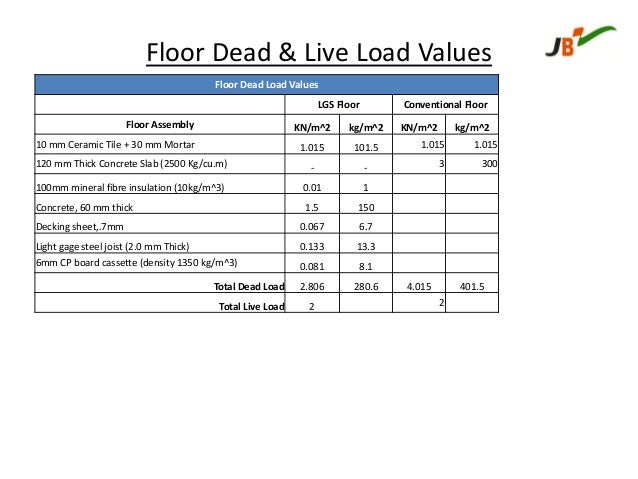These loads vary in magnitude position and duration but the building codes also require a designated live load be applied to every square foot of floor system.
Floor loading standards residential.
Different design methods are used but they typically defined the load cases or combination stress or strength limits and deflection limits.
In the case of a residential structure this minimum standard live load factor for main living areas is 40lb ft2 1 9 kpa.
They are legally backed by the engineering profession.
The dead load on a floor is determined by the materials used in the floor s construction.
May be less depending on roof slope.
A typical wood frame floor covered with carpet or vinyl flooring has a dead load of about 8 pounds per square foot.
If the floor trusses support load bearing walls that carry upper level floor and or roof.
However if the attic is intended for storage the attic live load or some portion should also be considered for the design of.
Total dead loads 6 2 2 8 1 0 10 0 psf live load 20 psf.
Load types loads used in design load equations are given letters by type.
For the bottom floor of a single story residence no basement.
Dead loads cont d typical weights of horizontal systems roof construction asphalt shingles 15 psf pounds per sq.
Foot ceiling construction gypsum sheetrock finish 10psf floor construction carpet or vinyl 10 psf hardwood floor 12 psf ceramic tile 15 psf.
By contrast the span charts in as1684 are limited only to residential floor live loads of 1 5kpa 1 8kn.
D dead load l live load l r live roof load w wind load.









